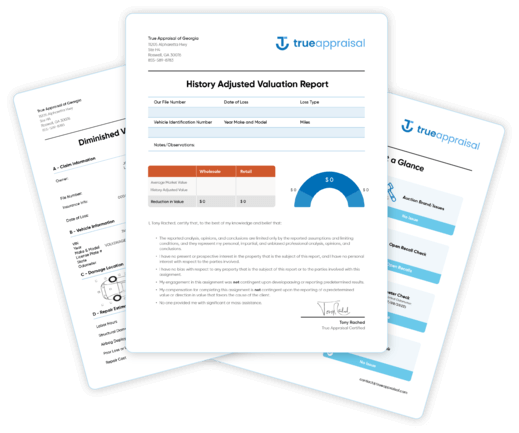Navigating car insurance can be tricky, especially when it comes to Uninsured Motorists (UM) Coverage. In Georgia, drivers have important decisions to make about this coverage, which protects you from damages caused by uninsured or underinsured drivers. But with terms like “Added On” and “Reduced By” limits, how do you know which option is right for you?
This guide will help you understand Georgia’s Uninsured Motorists Coverage in simple terms. From the key options available to the state-mandated minimums, we’ll walk you through the critical decisions to ensure you’re protected on the road.
What Is Uninsured Motorists Coverage?
Uninsured Motorists (UM) Coverage is designed to protect you if you’re involved in an accident caused by a driver who doesn’t have insurance—or doesn’t have enough insurance to cover your damages. It also covers incidents involving hit-and-run drivers who cannot be identified.
This coverage applies to compensatory damages, such as:
- Bodily injury: Medical bills, lost wages, and pain and suffering caused by the accident.
- Property damage: Repairs to your car and other personal property damaged in the accident.
In short, UM coverage ensures that you’re not left paying out of pocket for someone else’s mistake.
Understanding Your Options for UM Coverage in Georgia
Georgia law requires that your policy includes some level of UM coverage unless you explicitly reject it. However, you do have options for how this coverage is structured:
1. Uninsured Motorists Coverage – Added On To At-Fault Liability Limits
This option provides coverage in addition to the at-fault driver’s liability insurance. For example:
- If the at-fault driver’s liability insurance covers $25,000 and your UM coverage is $50,000, you can collect up to $75,000 total for your damages.
This offers the highest level of protection, as it stacks your UM coverage on top of any available liability coverage from the at-fault driver.
2. Uninsured Motorists Coverage – Reduced By At-Fault Liability Limits
This option reduces the amount you can collect under UM coverage by the at-fault driver’s liability coverage. For example:
- If the at-fault driver’s liability insurance covers $25,000 and your UM coverage is $50,000, you can only collect $25,000 more from your UM coverage, totaling $50,000.
While this option provides protection, it’s less comprehensive than the added-on limits option, but it typically comes with a lower premium.
3. Rejecting UM Coverage Entirely
Georgia allows you to reject UM coverage entirely, but this is not recommended. Without UM coverage, you could be left with significant financial responsibility in the event of an accident caused by an uninsured or underinsured driver.
Georgia’s Minimum Requirements for UM Coverage
By law, Georgia requires that UM coverage is provided at minimum limits unless rejected:
- Bodily Injury: $25,000 per person / $50,000 per accident
- Property Damage: $25,000 per accident
You can choose higher limits that match your liability coverage for better protection. However, you can’t select limits below the state-mandated minimums unless you reject UM coverage entirely.

Making Your Selection: Key Considerations
When choosing your UM coverage, it’s important to evaluate your personal needs and financial situation:
- Do You Want Maximum Protection?
If you want the most comprehensive coverage, select Added On To At-Fault Liability Limits. This ensures that your UM coverage stacks on top of the at-fault driver’s liability coverage, providing maximum compensation for damages. - Are You Looking to Save on Premiums?
If affordability is a priority, you can choose Reduced By At-Fault Liability Limits. While it offers less protection, it still provides a safety net for accidents involving uninsured drivers. - Can You Afford to Reject UM Coverage?
Rejecting UM coverage entirely leaves you vulnerable to paying out-of-pocket if an uninsured driver causes an accident. While this option reduces your premium, the risks are significant, especially with Georgia’s high number of uninsured drivers.
A Breakdown of Georgia’s UM Coverage Options
| Option | Protection Level | Premium Cost | Example Scenario |
|---|---|---|---|
| Added On To At-Fault Liability Limits | Highest | Higher | Stacks on top of the at-fault driver’s coverage, giving you more compensation. |
| Reduced By At-Fault Liability Limits | Moderate | Lower | Subtracts the at-fault driver’s coverage from your UM coverage limit. |
| Reject UM Coverage Entirely | None | Lowest | No protection against uninsured or underinsured drivers. |
Why UM Coverage Is Essential
Uninsured Motorists Coverage isn’t just a legal formality—it’s a critical safety net that can protect you from financial hardship after an accident. With Georgia’s minimum limits, you’re covered for basic damages, but opting for higher limits or added-on coverage ensures peace of mind.
Accidents involving uninsured drivers are more common than you might think, and the financial fallout can be devastating without proper coverage. By understanding your options, you can choose a policy that works for your needs and budget.
Conclusion
Navigating Georgia’s Uninsured Motorists Coverage doesn’t have to be complicated. By understanding the difference between Added On and Reduced By limits and weighing your options carefully, you can make a decision that protects you and your loved ones from financial loss.
Whether you choose maximum coverage or a more cost-effective option, the key is to ensure you’re not left vulnerable in the event of an accident. So, are you ready to select the right Uninsured Motorists Coverage and drive with confidence on Georgia’s roads?




